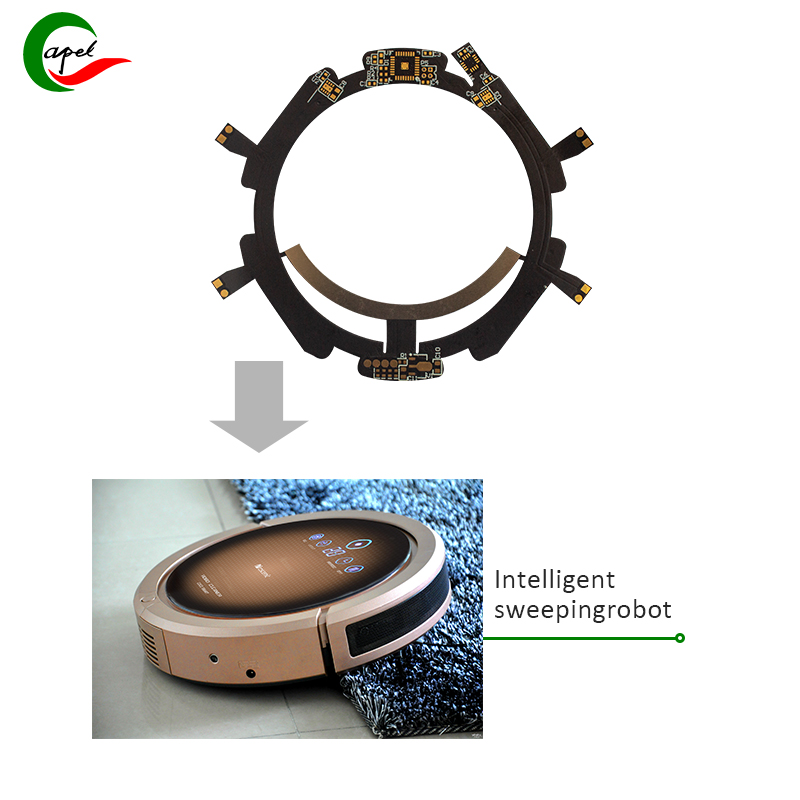Introduce
Maximizing the performance of printed circuit board (PCB) designs is critical to meeting the demands of modern electronic devices and applications. As the demand for smaller, faster, and more reliable electronics continues to grow, leveraging advanced PCB technology is critical. One technology that has received much attention in recent years is high-density interconnect (HDI) flexible PCBs, which offer a range of advantages for optimizing electronic design performance.
Learn about HDI flexible PCB design
HDI (High Density Interconnect) is a specialized PCB technology that enables the integration of high-speed, high-frequency and high-density components in a compact and flexible layout. This unique design approach is particularly beneficial for high-performance applications where space is at a premium. HDI Flex PCB board takes this technology further by incorporating flexibility, allowing the PCB to bend and conform to the shape of the device or system, allowing for more compact and innovative designs.
Advantages of HDI Flexible PCB Design for High-Performance Applications
Flexible PCB designs, especially those using HDI technology, offer a variety of advantages for high-performance applications. These include reduced weight and space requirements, improved signal integrity, enhanced electrical performance, and reduced electromagnetic interference (EMI). By utilizing flexible substrates and advanced manufacturing techniques, HDI Flex PCB designs provide the necessary foundation to achieve superior performance in modern electronic devices.
Key considerations for maximizing performance
When the goal is to maximize PCB design performance, there are several key factors to consider. These include the importance of component placement and routing for performance optimization, utilizing advanced materials to enhance electrical performance, and designing for reliability and longevity in high-performance applications. Ensuring optimized signal paths, strategic placement of components, and material selection based on electrical properties are key factors in achieving superior performance in PCB design.
In addition, the use of advanced materials, such as specialized dielectrics and conductive materials, can significantly improve the electrical performance of PCBs. Selecting materials with low dissipation factor, controlled dielectric constant, and high-frequency performance characteristics can enhance signal integrity and reduce losses, ultimately improving overall performance.
Real life case studies
Many companies have successfully maximized performance by implementing HDI Flex PCB designs into their products. By taking advantage of the flexibility and density of HDI Flex PCBs, these companies have achieved significant performance improvements in their electronic applications. The case study demonstrates the implementation of an HDI Flex PCB design and the resulting performance enhancements and is a valuable example of the impact and potential of this advanced PCB technology in real-world scenarios.
For example, Company X, a leading manufacturer of high-speed network equipment, uses HDI Flex printed circuit board design in its latest generation switches and routers. This implementation reduced signal loss by 30% and increased data transfer rates by 20%, significantly improving the product’s performance.
HDI Flexible PCB Design Best Practices
In order to optimize performance with effective HDI Flex PCB design, there are some best practices that should be followed. These practices include optimizing signal paths, utilizing high-performance materials, implementing controlled impedance design techniques, and ensuring effective thermal management. Additionally, collaboration between PCB designers and manufacturers is critical for performance optimization as it enables seamless integration of design intent with manufacturing capabilities.
Additionally, choosing the right PCB manufacturer is critical to successful HDI Flex circuit board design and implementation. Working with a manufacturer with flexible PCB technology expertise, advanced materials knowledge, and a proven track record in high-performance applications is critical to ensuring the success of the design and its subsequent performance.
hdi flex pcb manufacturing process
In summary
In summary, maximizing performance through HDI Flex PCB design provides many benefits for achieving superior performance in modern electronic applications. By leveraging the flexibility, density and advanced material capabilities of HDI Flex PCBs, designers and engineers can meet the ever-changing requirements of high-performance electronics.
For those seeking to optimize the performance of their electronic designs, it is critical to seek professional help with HDI Flex PCB design. With the support of experienced PCB designers and manufacturers specializing in HDI Flex PCB technology, the potential for superior performance in electronics becomes more feasible than ever. By embracing the possibilities offered by HDI Flex PCBs, electronic design and engineering professionals can push the boundaries of performance and innovation in their fields.
Performance Optimization in PCB Design: Final Thoughts
In the fast-paced world of electronics, the need for enhanced performance is everywhere. By emphasizing the importance of performance optimization in PCB design and adopting advanced technologies such as HDI Flex PCB, designers and engineers can unlock new possibilities and achieve superior performance in their electronic products. The road to maximizing performance through HDI Flex PCB design is truly an exciting journey, full of potential and promise for the future of electronic innovation.
Post time: Jan-16-2024
Back







